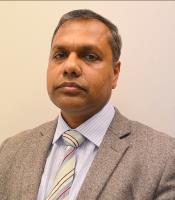Harmonising engineering education with nature
In the new millennium of digital communications, everything is wireless everywhere. Electromagnetic waves and propagation drive the wireless physical world. Therefore, it is imperative to teach advanced electromagnetics (AEM) as the core unit in university. AEM is the most abstract discipline in electrical and electronics engineering. The 21st century learners are less math equipped, but more exposed to social media and multi-media contents. For educators innovation in pedagogy is the key to teach the very abstract principle of engineering discipline. The seminar presents a new method of pedagogy drawn from experiential and anecdotal inferences in advanced electromagnetics. Inferences and analogies, which are drawn from nature, fauna, flora, and human interaction in society, help digest complex physical principles and laws of AEM.
Such pedagogical practices make students more keen to learn AEM, and retention of complex and abstract concepts is maximised.
Date and Time
Location
Hosts
Registration
-
 Add Event to Calendar
Add Event to Calendar
- Melbourne, Victoria
- Australia
Speakers
 A/Prof. Nemai Karmakar of Monash University
A/Prof. Nemai Karmakar of Monash University
Biography:
A/P Nemai Karmakar graduated with BSc (EEE) and MSc (EEE) degrees from Bangladesh University of Engineering and Technology, MSc in EE from the University of Saskatchewan, Canada, PhD in ITEE from the University of Queensland, PGDipTHE from Nanyang Technological University, Singapore and MHEd from Griffith University. He worked as a microwave design engineer at Mitec Ltd., Brisbane from 1992-1995 and contributed significantly to the development of Optus Mobilesat smart antennas. He taught senior-level courses in electronics, radar, microwave active and passive design and antennas at QUT, NTU, and Monash University. He has been working on collaborative research projects on smart antennas for soil moisture measuring radiometer in L/Ku/K-band downscaling, fully printable chipless RFID sensors for ubiquitous tagging and sensing, wireless power transmission, microwave biomedical imaging and devices, smart antennas for mobile satellite communications, and diagnostics of faulty power equipment. He has many patent applications in chipless RFID and sensors, eight books and about three hundred refereed journal, conference and workshop publications. A/P Karmakar is a graduate member of IEAust and a senior member of IEEE.
